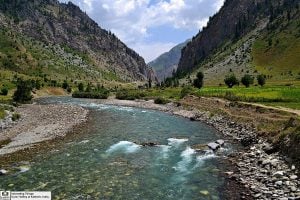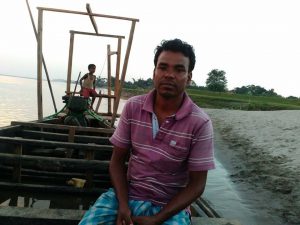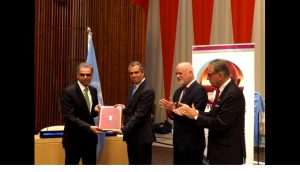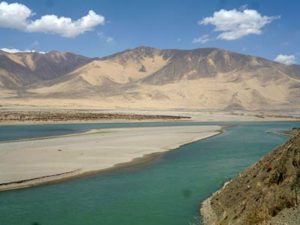Recently Bangladesh became the second South Asian country after Sri Lanka to effectively end open air defecation. While this is a stunning achievement for a country bedevilled by social, economic and political challenges since its establishment in 1971, not all of the country has benefited equally when it comes to sanitation. Those living in wetlands – locally called “haor” – have yet to benefit from the advances the country has made.
See also: Open defecation ends in Bangladesh – almost
These are areas where the land is under water for up to six months a year. Houses are built on stilts. During the dry season most people make temporary pit latrines, and children defecate in the open, but this is impossible during the rainy season.
![During the rainy seasons much of the land in the haor areas is submerged [image by Pinaki Roy]](/wp-content/uploads/2016/09/haor-villages.jpg)
This year, though, things have changed.
“People used to pollute water as they had no other options, but now we have been using this floating toilet. It is really good,” said Hossain.
An Innovative idea shows the way
Muhammad Talut, a civil servant posted in Sunamganj, came up with the idea of a “floating latrine”. Speaking to thethirdpole.net, Talut explained the idea.
“It is very simple, technologically. Anybody can make it using three to five empty fuel barrels, a plastic sanitary pan, bamboo, rope and some polythene sheet or cloth to provide shade,” said Mohammad Talut.
To make the toilets, three barrels would have put together horizontally. Two barrels work as the platform or floor while the middle one is the waste reservoir. The middle barrel can be cut to fit in a gooseneck plastic pan.

During the dry season, the latrine rests on the ground, but during the monsoon it becomes a floating platform. The gooseneck plastic cover keeps the waste within the barrel. A 200 litre barrel can hold up to 160 litres of waste before it has to be emptied into a reservoir. The reservoir can then be used to make fertiliser. According to Talut’s calculations, a three-member family can use such a latrine for up to a month before it needs to be emptied. Given the nature of the materials, such a latrine could be used for four or five years continuously.
The total cost of such a floating latrine would be only around BDT 3,000 (around USD 40), while conventional toilets cost ten times the amount. The idea came to Talut when he noticed that the administration headquarters had a huge number of empty barrels. These had been seized from people trying to steal sand.
“I was figuring out how to resolve the sanitary problem of the haor dwellers, and I realised that we had most of the required materials at hand. I drew the basic layout of the floating latrine using the materials,” Talut said. Under a pilot project titled “Floating Latrine for Submerged People during Wet Season”, the people of Ghagatia have already been provided 48 such latrines.
Looking to the future
Hossain says that the people of the village are very happy with the new toilets. When asked about the next steps, that of making fertiliser from the gathered waste, he said that the government had built four permanent safety tanks in the village which will be long term reservoirs of the waste. The villagers have also been provided two pumps to transfer the waste to the reservoir once the floating latrines are filled.
The true test of the experiment, though, will be the extent to which people use it. Talut said that designing the floating latrine was not the real challenge; the difficulty will lie in changing the behaviour of residents.
So far, though, both residents and officials seem happy with the new endeavour. Sheikh Rafiqul Islam, the deputy commissioner of Sunamganj district, said, “The pilot project of floating latrine is splendid work by the local administrator. Now we are planning to introduce the project in other villages of the haor area. Soon we will submit a project to the government to receive funds as this innovation will help us to eradicate the challenge of bad hygiene in these areas.”
![<p>What the floating latrine looks like in practice [image by Muhammad Talut]</p>](https://dialogue.earth/content/uploads/2016/09/floating-latrine.jpg)





